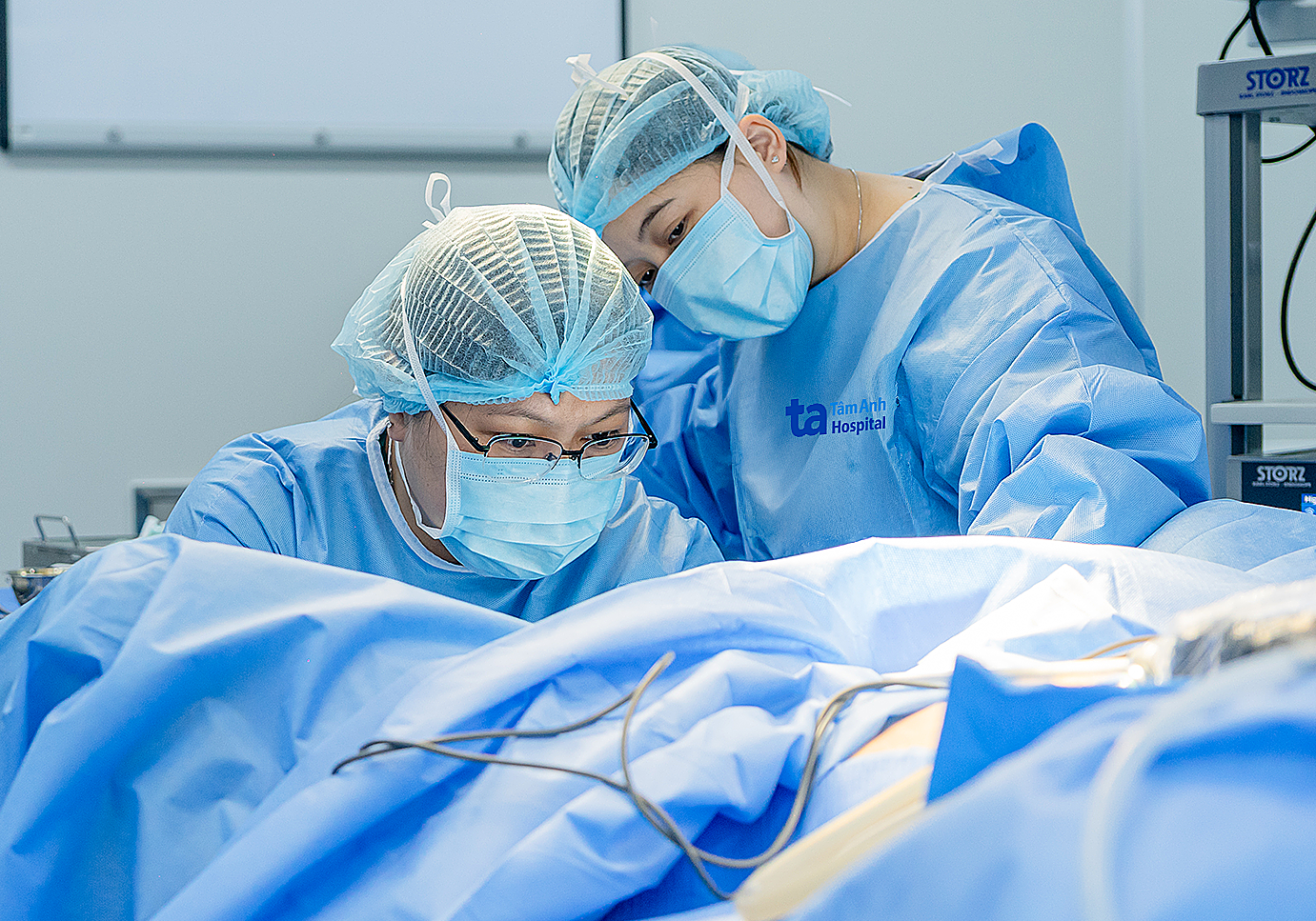Hang, a 30-year-old woman struggling with infertility for three years, visited Tam Anh General Hospital in Ho Chi Minh City in early May. Doctors discovered a 5x5 cm ovarian cyst, along with endometriosis, an intrauterine polyp causing irregular vaginal bleeding, and hydrosalpinx (fluid blockage in the fallopian tubes). She was advised to undergo laparoscopic surgery to remove the polyp and the ovarian cyst. During anesthesia in the operating room, Hang developed a full-body rash and experienced a drop in blood pressure. Doctors diagnosed her with a grade three anaphylactic shock, despite no prior history of drug allergies. She received emergency treatment, and the surgery was postponed.
Three months later, during a follow-up appointment, the ovarian cyst had grown to 6x6 cm, and an ultrasound revealed a solid structure inside. Dr. Nguyen Ngoc Thoai, from the Obstetrics and Gynecology Center at Tam Anh General Hospital, determined that the cyst's size and structure had changed, and tumor marker tests also showed an increase, necessitating prompt surgery. However, another surgery carried the risk of another anaphylactic reaction.
Anaphylaxis is a severe, life-threatening allergic reaction that can occur within seconds or minutes after exposure to an allergen, such as medication, latex, venom, or insect stings. "Hang's case was related to the medications used during the previous anesthesia," said Dr. Thoai, adding that four different drugs were used, making it difficult to pinpoint the specific allergen.
Dr. Huynh Vinh Phuc, Deputy Head of the Department of Anesthesiology and Resuscitation, collaborated with the Clinical Pharmacy team to carefully review Hang's medications in the operating room. They aimed to avoid all drugs potentially responsible for the previous reaction and selected alternatives with the lowest allergy risk. They were prepared to switch to spinal anesthesia if necessary.
After a small dose of a different antibiotic from the one used previously caused no reaction, the team opted for spinal anesthesia instead of general anesthesia.
 |
The surgical team switched to spinal anesthesia to ensure Hang's safety. Photo: Tue Diem |
The surgical team switched to spinal anesthesia to ensure Hang's safety. Photo: Tue Diem
With the spinal anesthesia successfully administered, the team proceeded with a two-stage surgery. First, they laparoscopically removed a 2x1 cm polyp located in the fundus of the uterus. Then, they made an abdominal incision to examine the uterus, remove the right ovarian cyst, and excise the fluid-filled fallopian tubes. Hang recovered well and was discharged three days later.
 |
Dr. Thoai (left) performing Hang's surgery. Photo: Thanh Luan |
Dr. Thoai (left) performing Hang's surgery. Photo: Thanh Luan
Dr. Vinh Phuc explained that severe allergic reactions (anaphylaxis) occur during anesthesia at a rate of 1/5,000 to 1/25,000. Muscle relaxants carry the highest risk of anaphylaxis compared to anesthetics, opioids, and antibiotics, with potentially serious complications and a mortality rate of approximately 3.4%.
Anesthesia and spinal blocks are common pain management techniques in surgery. Doctors choose the most appropriate method based on the patient's condition, medical history, surgical plan, and duration of the procedure. For patients with a history of anaphylaxis, doctors can mitigate the risk of recurrence by using alternative medications and techniques. For first-time surgery patients, doctors inquire about personal and family allergy history and assess underlying health conditions. During surgery, commonly used anesthetics are administered, emergency preparedness is ensured, and close monitoring is maintained both during and after the procedure.
Tue Diem
*The patient's name has been changed.
| Readers can submit questions about obstetrics and gynecology here for doctors to answer. |












